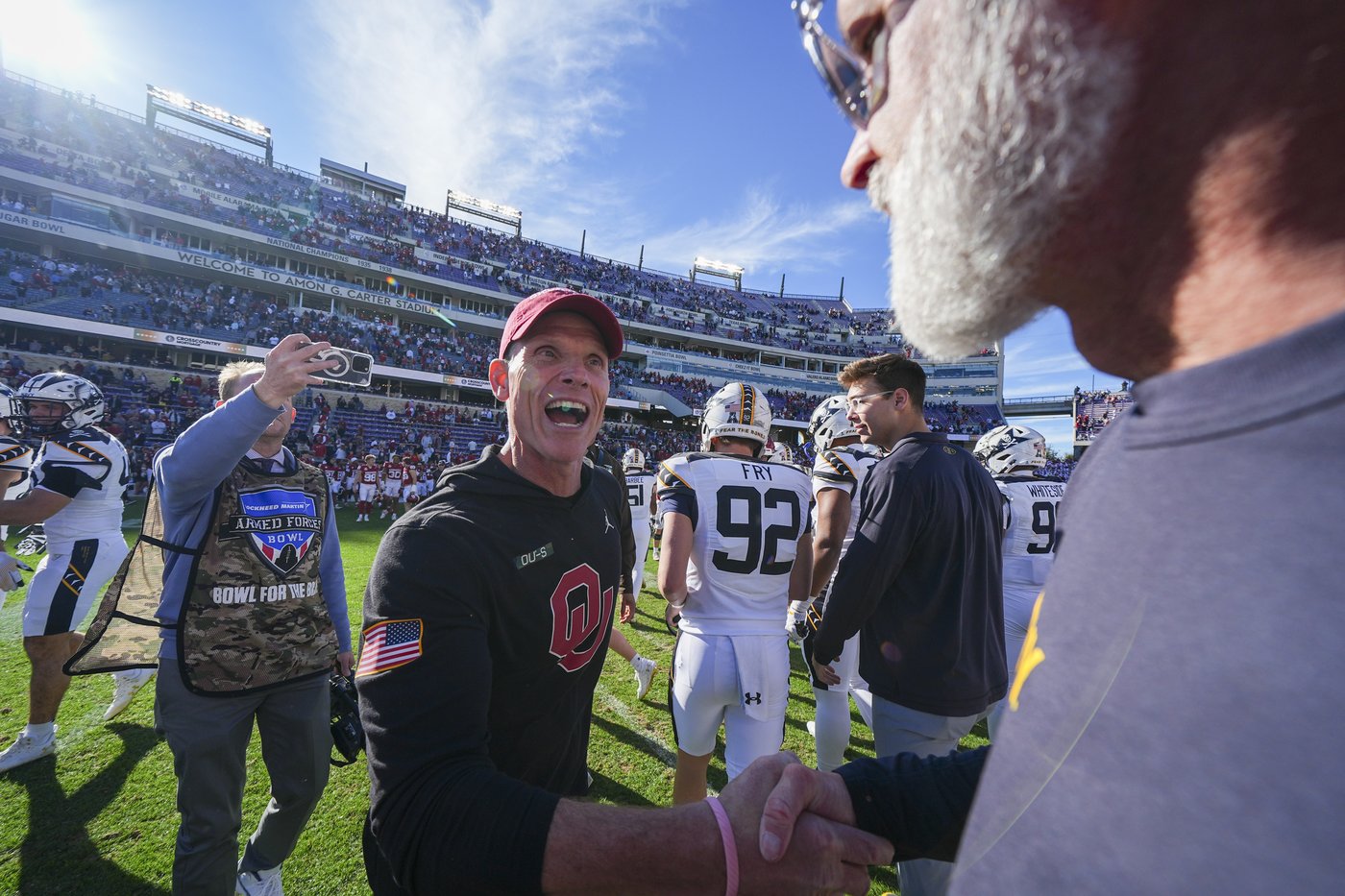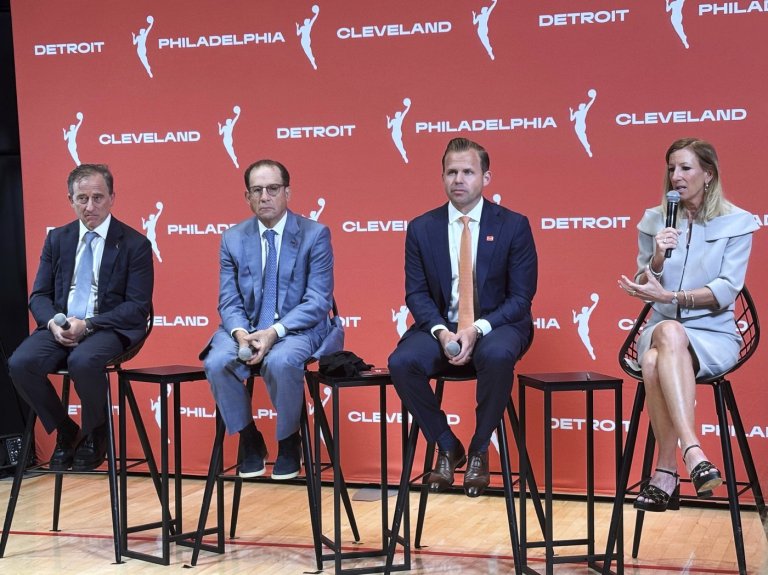
College football coaches are going for two and converting at the highest rate since the 1970s
NORMAN, Okla. (AP) — Brent Venables’ decision late in the Armed Forces Bowl last December was a sign of the times.
Oklahoma scored a touchdown in the closing seconds against Navy to cut its deficit to 21-20. Rather than kick the extra point and likely force overtime, Venables did what coaches increasingly are doing — he had his team go for two.
Venables said his team had practiced the scenario often, so he had decided that if the game was close enough with fewer than 30 seconds remaining, the Sooners would go for the win. Though Oklahoma had converted just one of four 2-point conversions on the season at that point, he still felt confident.
The Sooners failed, and Navy escaped with the win. Afterwards, Venables said he wouldn’t flinch in the future if a similar situation arose.
“I’d go for it again, every situation,” he said.
That’s in part because analytics have emboldened coaches. Last season, Bowl Subdivision teams converted their highest number of 2-point conversions — 226 — since 1970, according to NCAA statistics. They attempted 493 last season, the most since 1978. Teams made 45.8% of their 2-point tries last season — the best percentage since 1974 and the third-best mark of all time.
“Number one is the analytics and the value of those, and the more educated everyone has become through those analytics,” Venables said.
Part of the jump can be attributed to overtime rules. Before 2021, teams would start all overtime possessions at the opponent’s 25-yard line, and if they scored a touchdown, starting in the third overtime, they were required to attempt 2-point conversions afterward. Starting in 2021, the first mandatory 2-point conversions were moved up to the second overtime; if a game reached a third overtime, teams would alternate 2-point conversion attempts until a winner was determined — much like a soccer shootout.
“I’m going to guess that across the country, teams are practicing them a lot more because of the overtime rules,” Oklahoma State coach Mike Gundy said.
The increased emphasis has made coaches more comfortable trying them during regulation.
“I think you see people start the game, and they’re trying to create some momentum and get people on their heels early too,” Venables said. “You see all different types of strategy when utilizing the two-point conversion.”
The evolution of the 2-point try
Two-point conversions debuted in college football in 1958, and they were the shiny new toy coaches wanted to play with, particularly with point-after tries not as automatic as they are now. That was the only season on record during which more 2-point conversions were attempted than PATs. Records for attempts and makes from that season still stand from a year that saw kickers miss 31% of their extra point kicks.
Two-point conversion tries were relatively common in the 1970s, but as kickers became more accurate, the practice waned. In 2008, there were all-time lows of 181 2-point attempts and 67 makes.
In 2014, teams set a record by attempting PATs 96.4% of the time and the success rate on 2-point conversions hit a record low of 34.3%. As recently as 2019, only 286 2-point tries were attempted nationwide.
The shift came as dependence on analytics increased and overtime rules changed. Last season, NCAA stats show there were 79 more attempts than the previous year, 101 more than in 2022 and 169 more than in 2021.
Even if overtime 2-point conversions were removed, the increase in attempts the past few seasons is significant. According to Sport Radar, 2-point attempts in regulation increased from 331 in 2022 to 366 in 2023 and 416 last season.
More confidence in skipping the PAT
In the Atlantic Coast Conference, there were just 18 2-point attempts as recently as the 2018 season. That total rose to 38 in 2022 and 2023, then to 73 in 2024. Last season saw six teams attempt at least seven tries; by comparison, only one team in the previous decade (Miami in 2020) had attempted at least seven 2-point tries, according to SportRadar.
Pittsburgh is among the teams trying them more often. The Panthers attempted 10 and converted five last season, both good for second nationally. The number is inflated by a 4-for-5 showing in a six-overtime loss to Toledo in the GameAbove Sports Bowl. But the five attempts before that extended game nearly matched the Panthers’ number of attempts the four previous seasons combined (six).
Pitt coach Pat Narduzzi laid out two scenarios – the first where it wouldn’t make sense to try for two.
“In a game, if you’re up, let’s just say you’re up by three, you kick an extra point, well what’s an extra point do? It gets you to four,” he said.
Narduzzi then offered a scenario that would make sense to go for two.
“You’re up by five, what does an extra point get you — to six, and then (a touchdown and) an extra point by the other team gets you beat,” he said. “So there’s all those analytics of like, why kick an extra point when you can possibly get two — if it’s not going to hurt you.”
Still, for all the fancy analytics and numbers, Venables said it still comes down to decision making.
“Still at that point, the best thing you can do is use your guts and your instincts, your feel for the game and how that’s going,” he said.
___
AP Sports Writer Aaron Beard contributed to this report.
___
Get poll alerts and updates on the AP Top 25 throughout the season. Sign up here. AP college football: https://apnews.com/hub/ap-top-25-college-football-poll and https://apnews.com/hub/college-football
Join the Conversation!
Want to share your thoughts, add context, or connect with others in your community?
You must be logged in to post a comment.

















